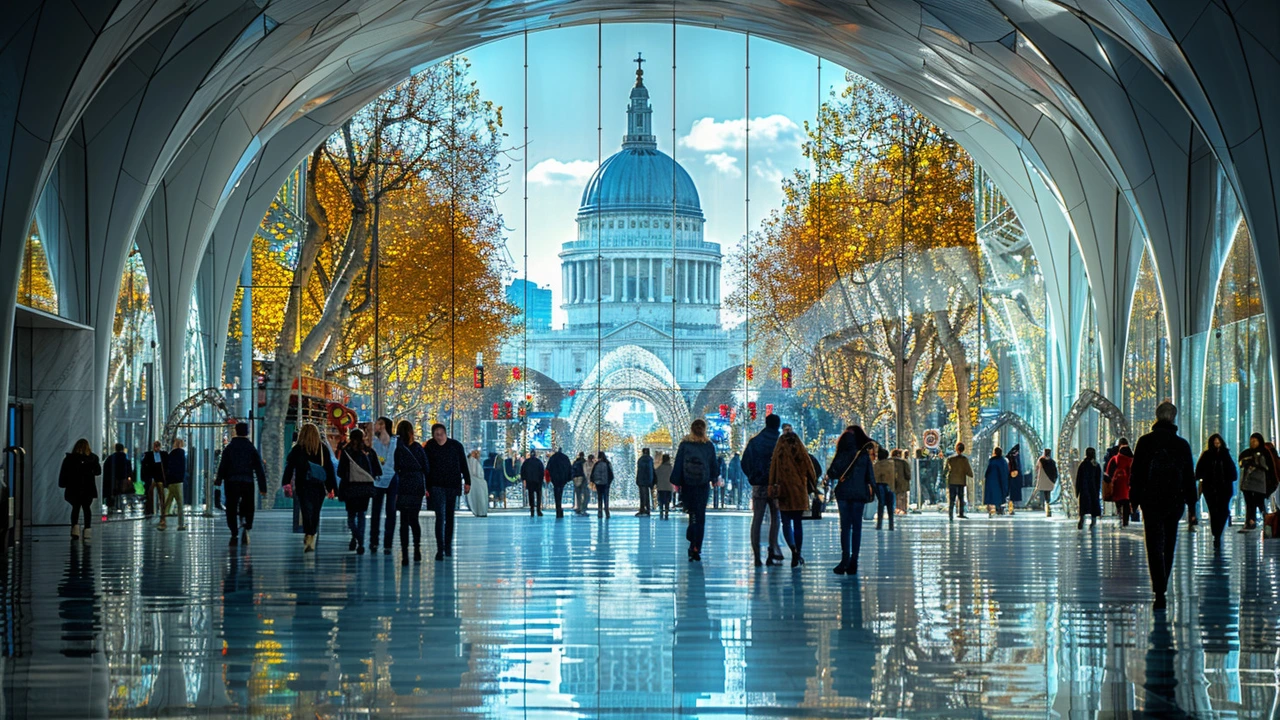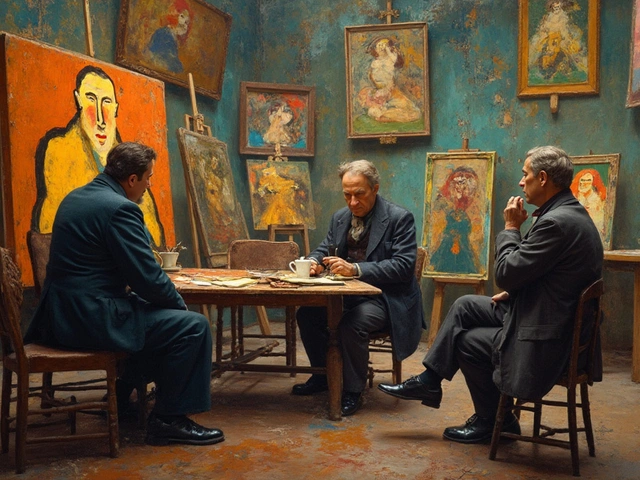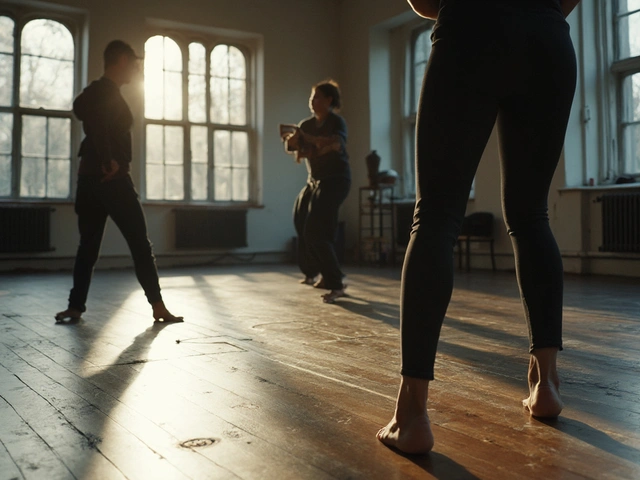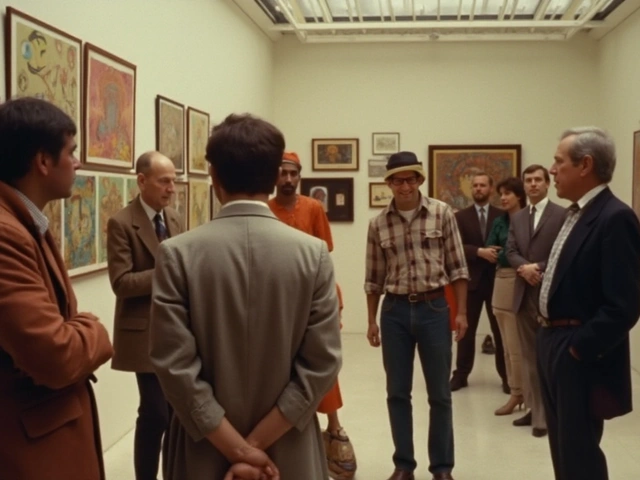Kinetic art is a captivating fusion of artistry and the principles of motion, offering a dynamic way to experience creativity. This intriguing form of expression plays with movement, leveraging the forces of physics to bring static pieces to life. Imagine a sculpture that twists and turns, or an installation that shifts with the breeze. These are the awe-inspiring wonders of kinetic art.
Artists in this field are not just creators but also inventors, blending creativity with mechanical ingenuity. Kinetic art emerged in the early 20th century, giving rise to a new way of experiencing visual art. From mesmerizing mobiles to intricate clockwork pieces, each work is a testament to the harmony between art and science.
This article will take you on a journey through the world of kinetic art, uncovering its history, the physics behind the magic, and the techniques that artists use to bring their visions to life. Whether you're an art enthusiast or a curious mind, there's something incredibly fascinating about watching art in motion.
- The Origins of Kinetic Art
- How Physics Shapes Kinetic Art
- Techniques and Tools Used by Artists
- Famous Kinetic Artworks and Artists
- Creating Your Own Kinetic Art
The Origins of Kinetic Art
Kinetic art, a genre that seamlessly blends the realms of art and physics, has a fascinating backstory that dates back to the early 20th century. This art form broke away from static representations, embracing movement and interactive elements to create truly dynamic visual experiences. One of the first instances of kinetic principles being used in art can be traced to the groundbreaking works of the Italian Futurists. During the early 1900s, these avant-garde artists wanted to capture the essence of speed and motion in their pieces, reflecting the rapid technological advancements of their time.
The pioneering artist, Marcel Duchamp, further propelled kinetic art into the spotlight with his 1913 piece, Bicycle Wheel. This artwork, consisting of a bicycle wheel mounted on a stool, encouraged viewers to appreciate ordinary objects from a new, moving perspective. Duchamp's innovative approach paved the way for kinetic art to evolve, inspiring countless others to explore the artistic potential of motion.
During the mid-20th century, other influential artists like Alexander Calder and Naum Gabo contributed significantly to the development of kinetic art. Calder introduced the concept of the 'mobile' – delicately balanced sculptures that moved with air currents. His works, such as the famous Untitled from 1976, captivated audiences with their graceful, floating forms. Gabo, on the other hand, experimented with motorized sculptures, creating pieces that oscillated and twisted rhythmically. In a statement that personified the spirit of the time, Gabo once said, "The image of the stationary object... has disintegrated as positively as the atomic structure of solid material."
"Art must be an integral part of real life, closely connected to society and evolving with the progress of technology," stated Naum Gabo, highlighting the era's sentiment on art's relationship with modern advancements.
The kinetic art movement gained further momentum in the 1950s and 1960s with the formation of groups like Nouveau Réalisme in France and GRAV (Groupe de Recherche d'Art Visuel). These artists were dedicated to merging art with scientific principles to challenge traditional notions of aesthetics. They actively sought to engage viewers, transforming passive observers into participants. The interactive nature of their works often invoked curiosity and wonder, inviting people to think about the laws of motion that governed the artwork's behavior.
An important aspect of kinetic art is its ability to create a sense of unpredictability and spontaneity. Unlike traditional static art forms, kinetic pieces are perpetually changing, influenced by external elements like wind, light, or even the touch of a spectator. This ever-changing characteristic makes each encounter with a kinetic piece unique, contributing to its allure and mystique.
Today, kinetic art continues to evolve, embracing modern technologies such as robotics and digital media. Contemporary artists draw inspiration from their pioneering predecessors, pushing the boundaries of what is possible. By merging the worlds of art and science, they create innovative works that captivate and inspire. Through kinetic art, we are reminded of the beauty of movement and the endless possibilities that arise when creativity meets physics.
How Physics Shapes Kinetic Art
Physics plays a crucial role in kinetic art, directing how these mesmerizing pieces move and interact with their surroundings. By leveraging principles such as gravity, magnetism, and momentum, artists can create dynamic sculptures that captivate and engage. The interplay of these forces allows pieces to move in intricate and often unpredictable ways, making each experience with the art unique.
One of the most fundamental principles applied in kinetic art is gravity. Gravity-driven kinetic pieces use counterweights, balance, and pendulums to create movement. Think of Alexander Calder’s famous mobiles, where each piece carefully balances and shifts with the slightest breeze. This constant interaction with natural forces makes kinetic art not only visually stimulating but also instinctively engaging.
Magnetism is another force that kinetic artists utilize to bring their creations to life. Strong magnetic fields can make metal components move or float, creating the illusion of defying gravity. Magnetic kinetic sculptures often involve intricate designs where magnets are hidden within the art parts, providing seamless and smooth movement. This incorporation of invisible forces adds a layer of mystery and wonder to the viewer’s experience.
Momentum and inertia are crucial in kinetic art that involves motion. When an object is set into motion, it wants to stay in motion unless acted upon by another force—this principle helps create continuous movement in kinetic sculptures. Wind-driven sculptures, like those by artist Anthony Howe, exploit these principles beautifully, transforming the energy from the wind into a mesmerizing dance of metal parts.
"Kinetic art is not just about movement—it's about the relationship between forces and materials, and how we can manipulate them to create ever-evolving pieces." - Kenneth Snelson
By understanding and harnessing these key principles of physics, kinetic artists can push the boundaries of traditional art forms. They create works that are not only visually appealing but also invite viewers to ponder the underlying mechanics and forces at play. These pieces often require a meticulous balancing act where too much or too little of a force can drastically alter the effect, adding to the complexity and beauty of the art.
Creating kinetic art also often involves a lot of trial and error. Artists need to experiment with different materials and designs to achieve the perfect balance and movement. They might use metals, plastics, wood, and even everyday objects, but the material chosen must be able to endure the stresses of continual motion. This experimentation adds a level of unpredictability and excitement to the creative process.
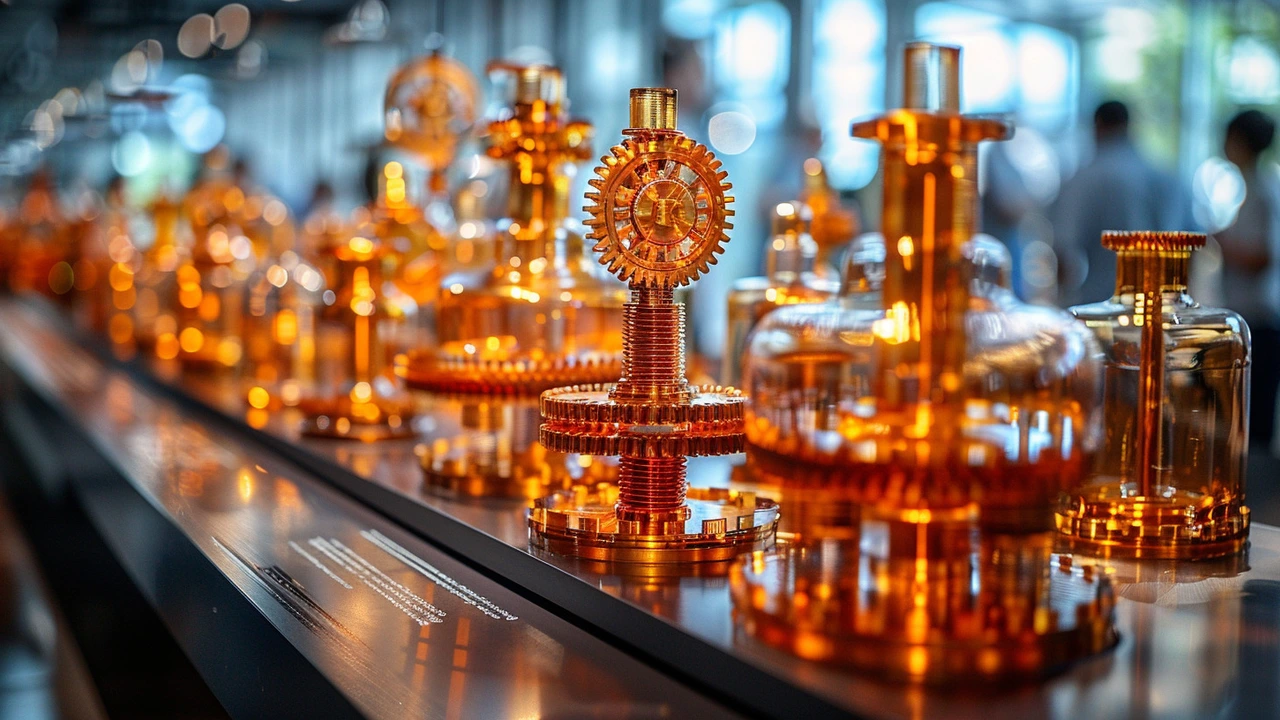
Techniques and Tools Used by Artists
Creating kinetic art is a fascinating blend of creativity and mechanical engineering. Artists in this field are masters of many crafts, often working with a variety of materials and tools to bring their visions to life. The process typically begins with a strong concept, often inspired by nature, technology, or abstract ideas. This concept is then sketched out and meticulously planned to ensure the desired movement and interaction can be achieved.
One of the main techniques used in kinetic art is the use of rotating parts. These parts are often powered by small motors or even simple hand-cranked mechanisms. Precision is key, as even a small imbalance can affect the smoothness and grace of the motion. Materials like lightweight metals, wood, and plastics are commonly used because they are easier to balance and manipulate.
Another crucial technique involves the use of pendulums. Pendulums create a natural, rhythmic movement that can be both soothing and mesmerizing. They are often incorporated into larger installations or combined with other moving elements to create complex interactions. This technique requires a deep understanding of physics, particularly the laws of motion and gravity.
Electronics play a significant role in modern kinetic art. Microcontrollers, sensors, and programmable LEDs can add layers of interactivity and dynamism to a piece. Artists use these tools to create works that respond to external stimuli, such as light, sound, or even the presence of an observer. This approach transforms a static piece of art into a living, responsive entity.
As renowned artist Jean Tinguely once said, "Kinetic art is the embodiment of movement, the visible harnessing of the natural forces that surround us."This quote perfectly captures the spirit of kinetic art, where motion and interaction are at the core of the creative process.
One particularly engaging technique involves the use of wind power. Sculptures designed to move with the wind create a direct connection between the art and its environment. These pieces can be found in public spaces, enhancing the landscape with their gentle, organic movement. Materials like aluminum and stainless steel are often used for these outdoor installations due to their durability and resistance to the elements.
In addition to these techniques, artists often employ advanced fabrication tools. Laser cutters, 3D printers, and CNC machines allow for precise and intricate designs that would be impossible to achieve by hand. These tools open up new possibilities for innovation and creativity in the field of kinetic art.
Kinetic artists are also tinkerers at heart, often repurposing everyday objects to serve as components in their works. Everything from bicycle parts to kitchen utensils can find a new life in a kinetic sculpture. This approach not only adds a layer of sustainability to the art but also encourages viewers to see the potential for beauty and movement in the mundane.
Famous Kinetic Artworks and Artists
When we think of kinetic art, several notable artists and their remarkable works often come to mind. Alexander Calder is one of the most prominent figures in this realm. Often referred to as the father of mobile sculptures, Calder's playful yet intricate designs brought a new dimension to modern art. His mobiles, constructed out of carefully balanced shapes hanging from wire, come alive with the slightest airflow, creating a visual symphony of motion and form.
Another pivotal artist in kinetic art is Jean Tinguely. This Swiss artist was known for his whimsical and often chaotic machines made from found objects and scrap materials. Tinguely’s most famous work, "Homage to New York," was designed to self-destruct in a spectacular performance in the garden of the Museum of Modern Art in 1960. Though the piece malfunctioned midway, it emphasized the transient and ever-changing nature of modern life.
Victor Vasarely, often hailed as the pioneer of optical art—which is closely related to kinetic art—created works that play tricks on the eyes. His pieces, such as "Vega-Nor", use geometric shapes and vivid colors to create the illusion of movement and depth, challenging perceptions of space and reality. Vasarely believed that art should be democratic and accessible to all, which led him to mass-produce his works in various forms.
With a more contemporary approach, artist Theo Jansen has fascinated audiences with his Strandbeests. These walking sculptures, powered by wind, roam beaches like surreal, mechanical animals. Made from lightweight plastic tubes, the Strandbeests blend art and engineering, capturing energy from their environment to move. Jansen's work underscores the harmony between nature and innovation in kinetic art.
Theo Jansen once said, “The walls between art and engineering exist only in our minds.”
Nicolas Schöffer, a Hungarian-born artist, emphasized the use of technology in kinetic art. His "Cybernetic Tower" series incorporated lights, sounds, and movements controlled by electronic sensors that reacted to the viewer's presence. Schöffer’s integration of cybernetics showcased the potential of machines as collaborative partners in the creative process, rather than mere tools.
For those inspired to explore kinetic art firsthand, there’s fantastic work from Rebecca Horn. Her installations often explore the body's relationship with machines, creating an immersive experience. Horn’s "Floating Poetry," for example, is an installation featuring long feathers attached to a motorized mechanism. As they move, the delicate feathers create patterns in the air, evoking a sense of ethereal beauty and poetic movement.
These artists and their creations reveal the endless possibilities within kinetic art, demonstrating how motion can transform static materials into living, breathing compositions. Their works continue to inspire new generations of artists, blending creativity with the physical laws governing our world.
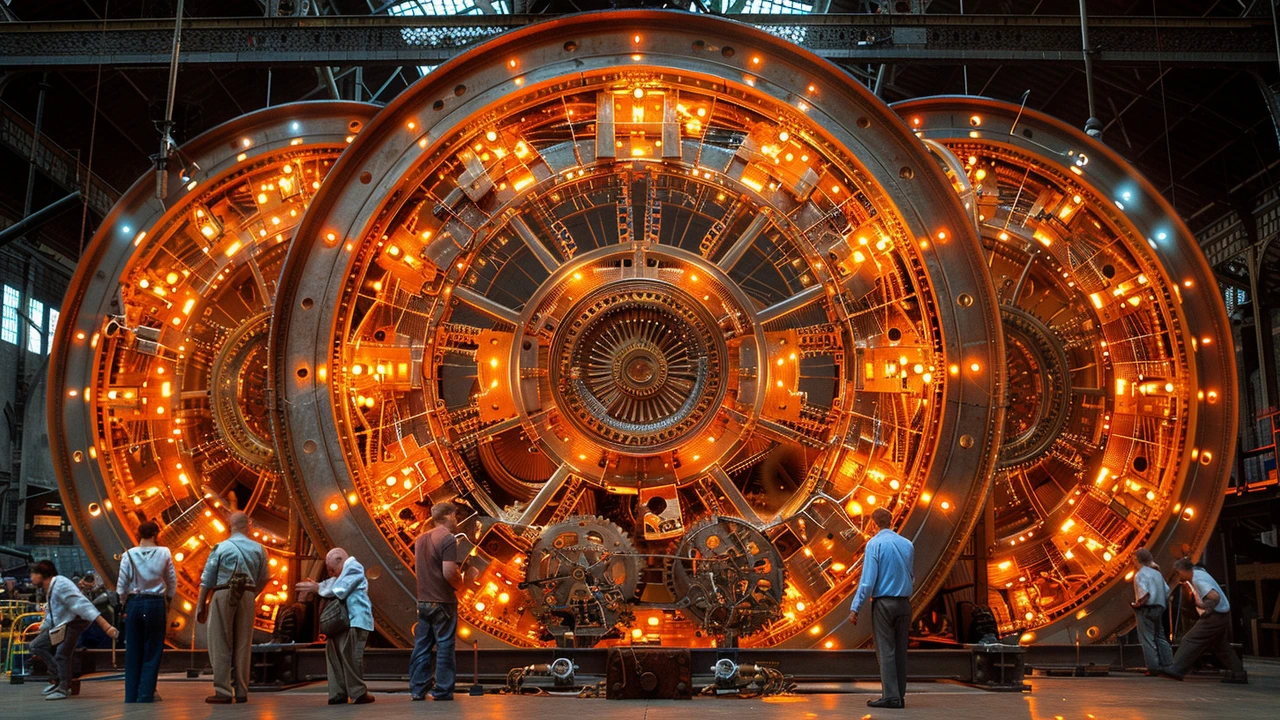
Creating Your Own Kinetic Art
Diving into the world of kinetic art can be both thrilling and rewarding. It's an opportunity to merge your artistic flair with a touch of engineering. But where do you start? The first step in creating kinetic art is to understand the basics of movement. You need to consider what kind of motion you want to achieve—do you want your piece to swivel, spin, bounce, or sway?
Materials play a crucial role in kinetic art. Select durable and flexible materials like metal rods, wood, and sturdy wires. Lightweight materials like paper and plastic can also add a dynamic element but be mindful of their durability. For beginners, it's advisable to start small and work your way up to more complex structures. Think about incorporating elements like gears, pulleys, and levers to bring more intricate motion to your art.
Before you start assembling your kinetic sculpture, sketching out your design can help visualize the final piece. Consider how each part will move and interact. A good plan can save a lot of time and make construction smoother. You may also need some basic tools like pliers, screwdrivers, and a soldering iron, especially if you're working with metal.
If you're looking for inspiration, delve into the works of renowned kinetic artists. Alexander Calder, often credited with inventing the mobile, created sculptures that moved gracefully with the slightest air currents. His work can provide insight into balancing and aligning various parts to achieve smooth motion. Another prominent figure, Jean Tinguely, designed whimsical machines that combined art and mechanics, offering a more complex and sometimes chaotic kinetic experience.
Experimentation is key in kinetic art. Don't be afraid to test different mechanisms and arrangements. You might find that a small change can completely transform how your piece moves. If a part isn't working as expected, tweak it until it does. The process can be as rewarding as the final product, offering a deep sense of accomplishment.
"Kinetic art must contain elements of color, movement, and time. Each contributes to the viewer's experience and the artwork’s expression." - Naum Gabo, Sculpture Expert
Here are some tips to get you started:
- Start small to gain experience with materials and movement.
- Use lightweight, durable materials that can withstand repeated motion.
- Always balance your pieces properly to ensure smooth movement.
- Utilize everyday objects like old clock parts for gears and mechanisms.
- Keep experimenting until you're satisfied with the motion of your piece.
Patience is essential when creating your own kinetic art. It may take a few tries to get everything moving just right, but the result is a beautiful, dynamic piece of art that dances with every breeze. Whether it's a simple mobile or an intricate machine, each creation carries a part of you, making the journey as fulfilling as the destination.

